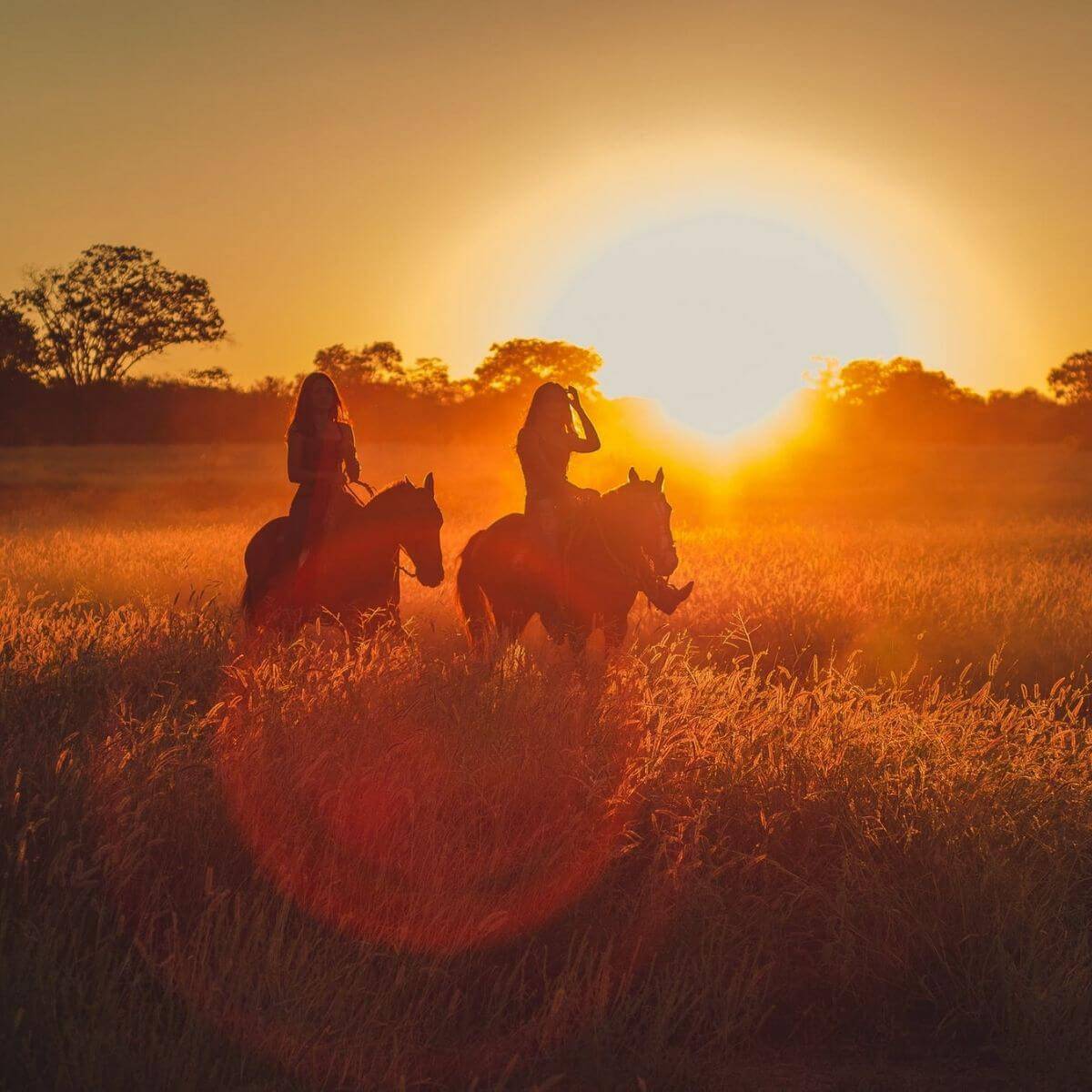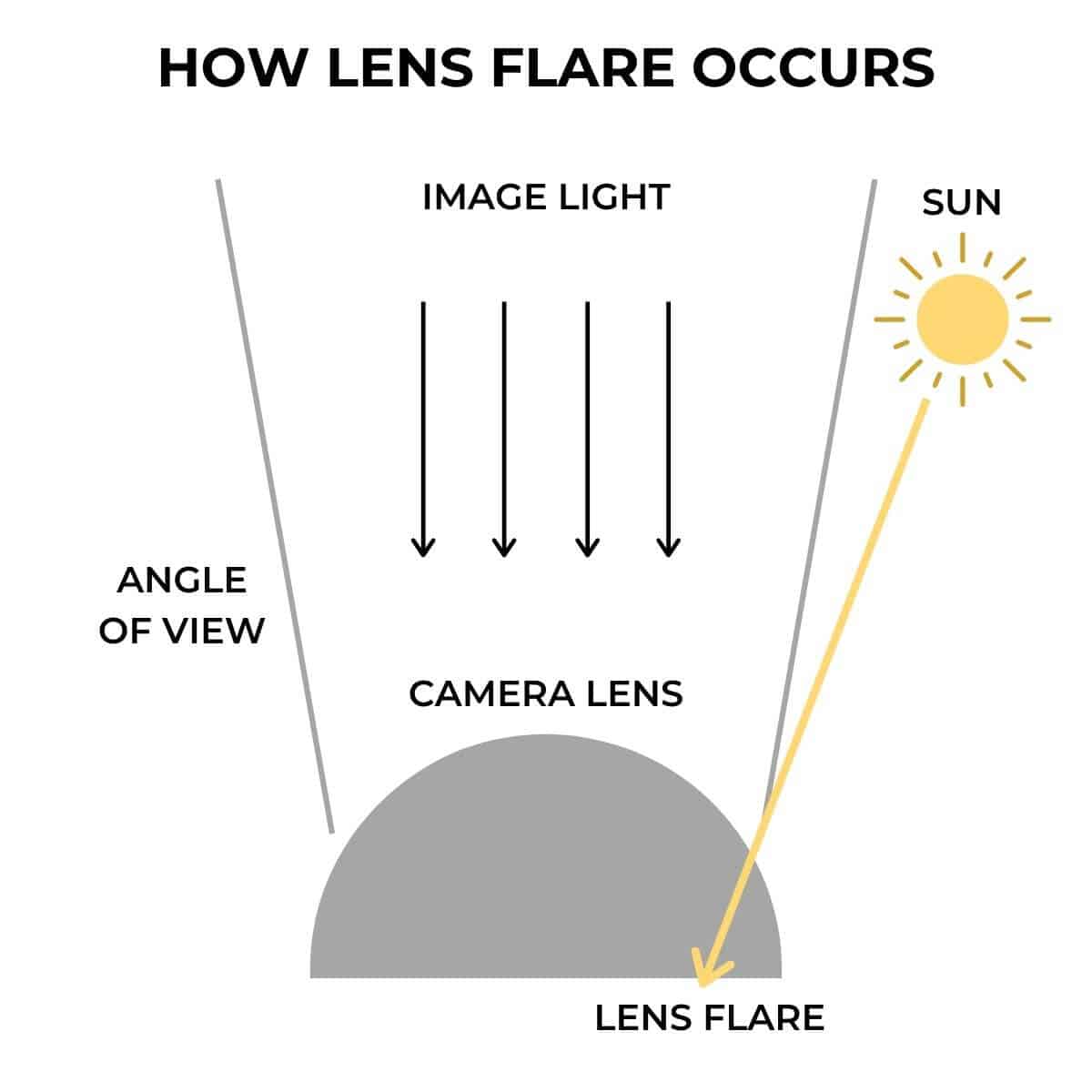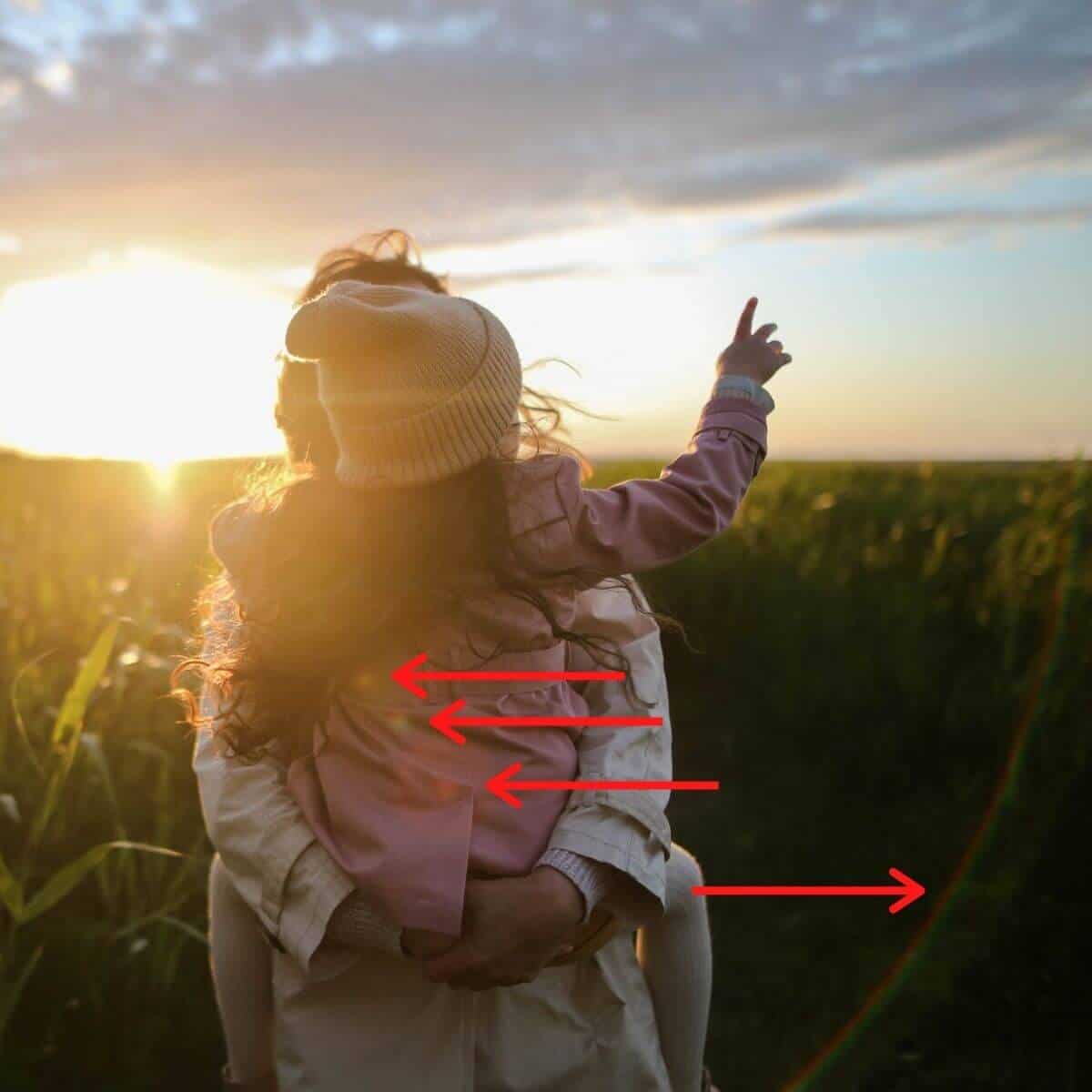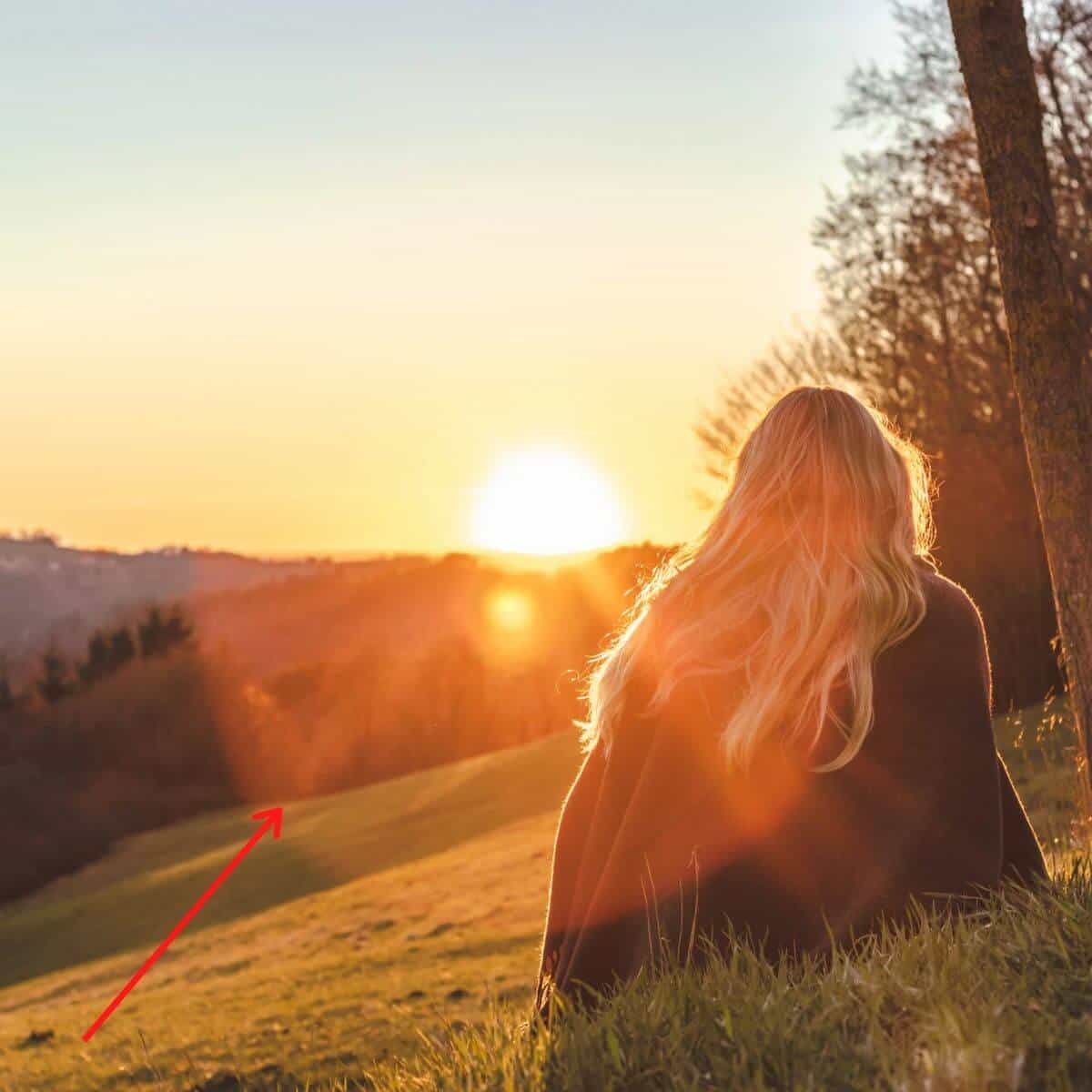Lens flare refers to an event when a bright light enters your camera lens, hits the sensor, then is scattered or flared.

Understanding lens flare
When you’ve taken an image during a sunny day, have you noticed spots or rings in the photo? That’s lens flare.
Related: Beginner tips to jumpstart your portrait composition
It’s the result of a reflection from stray light on your camera lens. It also causes a decrease in contrast and saturation.
The following is an example of how it occurs:

Now, the sun isn’t the only thing that causes lens flare. Any bright light, including neon signs, car lights, and stadium lights, are things that can cause it.
Related: How to use selective focus
Technically, lens flare is considered an error. However, it can create a beautiful photo by adding a dreamy effect.
Regardless of whether you think it’s an error or not, understanding how it happens is important to avoid or use it.
What it looks like in a photo
The following are examples of the rings and spots in photos:
1. Small spots caused by the sun

When you take a photo at sunset and shoot with the camera pointing towards the sun, you’ll notice small circles that are usually red, yellow, or green.
The stray light can also cause curved lines in the image that appear in the same colors.
In the image with a parent holding a child, there are both types. There are three small circles on the child’s back and a curved line in the grass.
2. One large spot

Lens flare can also appear as a large circle, like the one in the image of a person watching a sunset on a hill. You’ll also notice that there’s less contrast.
How to avoid lens flare
The key to reducing or avoiding lens flare is to eliminate the stray light. One of the best ways to do this is to use a lens hood.
It may seem like the lens hood will be an easy fix to the solution. However, you may need to try multiple lens hoods before selecting the right one.
That’s because many of them don’t extend far enough to block all of the stray light.
In addition to the length, the type also matters. Generally, petal-shaped lens hoods work better because they consider the aspect ratio of your camera’s sensor.
Aside from using a lens hood, composition is a great way to minimize flare.
If you want to shoot towards the light source, you can place your subject in front of the light source, or so that they’re partially blocking it.
Otherwise, shooting with the light source behind you will eliminate the lens flare. When you’re shooting this way, be careful with reflections because they can cause stray light to enter your lens.
The focal length of your lens also makes a difference. Wide-angle lenses perform better than telephoto lenses.
Related: Is a prime or zoom lens better?
If there’s any lens flare with a wide-angle lens, it’ll be smaller than a telephoto lens because a telephoto lens makes everything bigger.
To recap, using a lens hood, the right focal length, and composition are excellent ways to reduce or avoid lens flare.
How to use it to create a beautiful photo
Lens flare is a prime example of a beautiful imperfection, as long as its done correctly.
Look at it from an artistic perspective and see how it can add uniqueness to your image. It can make your photo look more dramatic and interesting.
The following are ways you can use it to capture an incredible photo:
1. Shoot during the golden hour. Taking photos during sunrise or sunset is the best time to capture soft, warm, and dreamy photos. These times are also known as the golden hour. Shooting during this time will also help you capture starbursts, which emphasizes the light rays.
2. Use nature. If you aren’t shooting during the golden hour, utilize nature. One of the ways you can do this is to shoot with backlight and have the light go through the trees. You’ll capture beautiful sun rays and bokeh.
3. Try using different apertures. Smaller apertures will create a sun-star effect, while large apertures will create a smooth and hazy effect. Try different apertures to see which one you like the most.
Frequently asked questions
Is lens flare good or bad?
Although it’s technically considered an error in photography, you can use it artistically. If it’s done intentionally, it’s a good thing because there are ways to make it look good.
Why are lens flares hexagonal?
The shape is determined by the aperture. The aperture is made up of several blades, and the number will dictate the shape of the lens flare.
Can you add it to an image?
Yes, lens flare can be added in Photoshop. In the Filter menu, there’s an option called Render, which will lead you to Lens Flare.
Conclusion
Lens flare is a technical error in photography. However, it can be a good thing when you use it artistically. By understanding how it works, you’ll be able to avoid or use it to your advantage.
More resources:
- How to capture sharp portraits
- What is aperture in photography
- Ultimate guide to light and airy photography
Featured image courtesy of Pexels.
